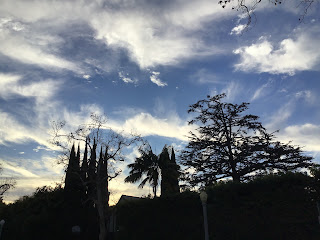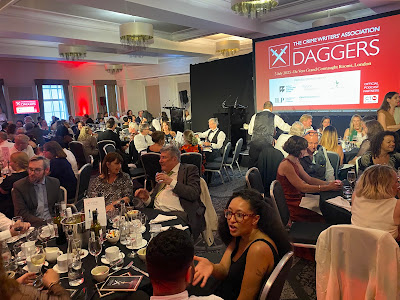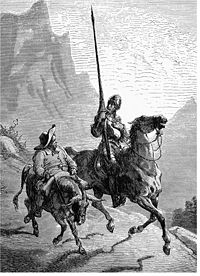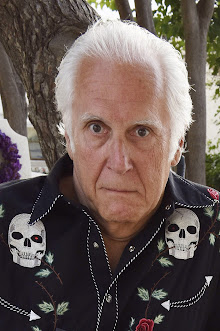Tuesday, July 15, 2025
Two Card Games and a Wedding
It's always hot in Singapore (We’re on the equator, after all) but recently it's also been raining and rainstorming. Luckily even the showers are warm here, so it's not so bad... and Singapore umbrellas are UV as well as waterproof!
And even more luckily, it held off for the important transitions over last weekend's wedding.
Lately it feels like all the nephews and nieces have been getting married one after the other. After meeting our new in-laws, I must say the best thing I'm realising about our family is we're really good at picking life partners!
It's also really nice meeting at weddings than funerals--which, sadly, is getting to be the other main reason we all meet up these days.
The older generation—the ones just above us—are gently receding (though to the young ones, we're probably all just 'old'!). They are more vague, walking more slowly, or worst of all--no longer with us.
And my own generation--since when did my cousins and siblings (and me!) suddenly turn into white haired aunties and uncles? But that's only the first impression. Once we start talking everything snaps back to the way it's always been and it feels like we're back in our late teens/ early twenties/ ageless and unaging selves again--even more so now because the children who turned up and took over their lives have now grown up and moved out.
So it felt (almost) like old times. But I encountered something new to me--card games. Remember how we used to play Monopoly and Cluedo? Which led some of us to grow up to be property tycoons and others to solve murders? I thought card games went out with rotary dial phones, but apparently they are definitely still a thing. And the ones I was introduced to are quite beautifully crafted!
Here are: Oh My Orchids! (created by Daryl Chow), Singapore 1889 (designed by Steve Ng, art and graphics by Regina AE (Ance Art) and my sesame-peanut dessert (totally delicious!) Our playing games didn't really take off because we were eating and talking too much, but I pinched these two packs and brought them home because I'm always interested in new ways to learn about Singapore history and I love flowers, especially orchids!
This is the 'River Mat' from the Singapore 1889 game. You shuffle and stack the cards (instructions included) along the river then 'fish' them out. What you 'catch' and what you do with it decides how well you do in the end, which is kind of matches how things worked in Singapore's early days.
Like this Salted Fish card--
If you fish out the Salted Fish card, you get to sneak a peek at the top card about to enter the river and decide whether to grab it for yourself or return it to the bottom of the stack.
And these other samples of Singapore's past--Opium, Spices and Joss Paper--are marked as managed by the British East India Company, Secret Society or a Chinese kongsi
btw, in this game, Joss Paper isn't just Underworld currency--it also allows you to draw two cards from the River and put one above the Secret Society card and return the other to the bottom of the deck.
And then there’s Oh My Orchids:
We didn't get to play this one at all--we were too busy catching up and maybe there was a little too much liquid conviviality. But I really liked the care with which these cards were drawn... and if only I'd found these cards earlier I could have given out that angsana seed card when The Angsana Tree Mystery launched!
But in between all the laughter and shared memories, there's also an awareness of time passing. The dancing, jogging, cycling, singing, super mahjong playing aunts who now sit quietly and the uncles who think you are your late mother (luckily we have the same name so it kind of works).
And you remember these people lived through history: British Colonialism, the Japanese Occupation, Secret Societies, the fight for Independance, oil lamps, rotary dial phones and cassette tapes, compulsory vaccinations, the cleaning up of the Singapore River and Covid. They saw the world's power centre move from Britain (in the 19th century) to North America (in the 20th) and are watching the craziness coming out of the United States right now.
And they survived all that--so hopefully we'll survive this too.
Sunday, July 13, 2025
Witnessing Magic in the Making
Annamaria on Monday
This past Friday and Saturday, I had the enormous privilege of watching how theater magic is made. And I found it to be a demonstration of human virtues at their gorgeous best.
If you drop in here at MIE regularly, you might have read about my enthusiasm for Hudson Valley Shakespeare - a theater company I fell in love with in 1986 at its first offering at Boscobel Historic House and Gardens Museum in Garrison, New York.
Since then the company has grow and changed and become ever more compelling. And my enthusiasm has grown along with it. But, until this past week, I have witnessed it only from a fan's and a supporter's point of view.
Here's how that changed.
Every year at the annual fund-raising gala, during the auction, the company offers bidders an opportunity to take a "walk-on role" - the chance to go on stage for a few minutes and pretend to be part of the cast. In the past, from my narrow point of view, I had always thought of this as something auction prize as attractive to wanna-be actors or amateurs involved in community theater, used to making fun productions for their neighbors to enjoy. But then, finally, the light dawned, and I realized that, if I could screw up enough courage to try it, I would get a chance to observe what happened behind the scenes, to see and learn intimately how the theater magic is made.
I was right! And it was gorgeous.
The ancient Greeks considered theatre a religious experience. I now think I know something about why they thought so. This past week, I got to be a tiny part of performances of both plays currently on offer under the HVS tent. Actually, I had bid on and won that prize in 2019. But, we all know what happened in 2020. As with all theater companies nationwide, the season was cancelled. It never occurred to me, at the time, to consider getting back my lost prize. Then, at last year's gala, when the item came up again, I decided to try for it. And I won.
And this past Friday and Saturday, I collected my prizes. Yes two, the one from 2019 and the one from 2024. The Artistic Director insisted that I was entitiled to both.
The shows this year are a hilarious production of
My experience over the past two days so exceeded my expectations that, as I write 26 hours later, I am still walking on clouds.
First, the week before, I met with Charlotte Palmer-Lane, the costume designer. I had voiced a preference to be an extra nun to the Abbess in Comedy of Errors. (I figured that my 17 years in Catholic school had prepared me to imitate of nun.)
In The Matchmaker, my role was as a cook in the household of one of the characters.
The hardest part for me was learning that there would be an announcement to the audience singling me out. I was up for hours the night before going on, fretting about screwing up and spoiling things. Was I going to flub and call attention to myself? I would feel more confident if I were relatively invisible. Worst of all, I was to be given a special round of applause. YIKES! I would never deserve that!
Once I worked out a way to deflect that special applause and give it to the people who really deserved it, I finally fell asleep.
Actors Equity rules prevented me from taking picture backstage during the performances. But even if I could show you such snaps, no photo could capture the beauty of the backstage I saw at HVS.
I sat watching in awe. The performers and the staff members behind the scenes, also those up in the booth, whom I could not watch, were all completely focused on the work. The backstage people, calmly and with great precision, moved costumes for changes, put out and put away props, helped actors make quick changes, and did many, many individual tasks that they know by heart and carry out with aplomb.
While watching, all I could do was admire how beautifully they were going about their tasks. I repeat the word "awe." It's the only one that fits.
The actors, so calm, so focused. Even when they were rushing around the u-shaped backstage area. Unless required to run, they walked at a relaxed pace, shoulders down and arms gently swinging. Nobody was spreading tension or the least bit of doubt. Some were silently mouthing the lines they were about to speak. Then, as the actors readied themselves to go on: they paused, collected their energy, and then stopping for a few seconds, took a breath and entered.
I talked with HVS's Artistic Director, Davis McCallum, about what I saw, and he aptly described seeing that same readying ritual on divers in the Olympics, climbing the ladder, stopping a moment. Then closing their eyes for a few seconds before launching themselves.
Later I realized that I had witnessed a gorgeous demonstration of humanity at its natural, innate, glorious best. We, the social animals, have developed and survived by working in teams. No demonstration of team work have ever seen outshines what I saw in Garrison this past Friday and Saturday.
Before I left, I got to spend a few minutes with Nance Williamson, the player of both the Abbess and Dolly Levy and the actor I most admire. Over the years I have seen her in scores of productions. All performances wonderful.
I think the ancient Greeks saw theater as a religious experience because to do it well brings out the essence of being human. And, of course, the stories speak of humans and their troubles and their triumphs, and what it means to be human. What I saw backstage was humans at our absolute, radiant best.
Saturday, July 12, 2025
Your Greece, Your Path
Saturday–Jeff
It’s summertime in Greece and life simply doesn’t get any better than that. If you’re an island person pick any Greek island and you’ll find magic there; but if for some reason your choice should not meet your mood or expectations, simply jump on a ferry and head to a different island for, of the more than 6000 Greek islands spread out across the Aegean and Ionian seas, 227 are inhabited.
For those who prefer a different experience, Greece’s mainland awaits you with a cosmopolitan Athens that’s the new toast of Europe, soaring mountains, deep valleys, breathtaking shorelines, fertile plains and ancient villages and sites––all peppered with locales steeped in classical history attesting to times when they served as the playgrounds of the gods.
But don’t take my word for it, this week the Hellenic Tourism Organization (GNTO) released a new video featuring the enchanting landscapes of Greece and historical landmarks. The video was created in collaboration with Netflix including clips from Netflix popular shows and series such as “Maestro in Blue,” “A perfect story,” “Beckett,” “Glass Onion: A Knives Out Mystery” and “Lighthouse Lesvos.”
It’s your Greece, and your path. Hope to see you somewhere along it soon.
Jeff
Jeff’s upcoming events
2025
All Live Events
September 3 – 7 |
Bouchercon 2025 | New Orleans, LA
Friday, September 5, 4:00-4:45 p.m.
New Orleans Marriott—La Galeries 5-6
Panelist, “Tips and Tricks for Keeping a Series Fresh,” with Anne Cleeland,
Marcy McCreary, Charles Todd, Tessa Wegert, and Moderator Deborah Dobbs
Saturday, September 6,
10:30-11:25 a.m.
New Orleans Marriott—La Galerie 3
Panelist, “No Passport Required: International Mysteries and Thrillers,” with
Barbara Gayle Austin, Cara Black, Joseph Finder, J.L. Hancock, and Moderator
Mark Ellis
Wednesday, September 17,
6:30 p.m.
Greek National Tourist Organization
Presentation of the literary work of Jeffrey Siger
Ilias Lalaounis Jewelry Museum
Kallisperi 12, Acropolis
Friday, July 11, 2025
The Bosphorus
I’ve been fascinated by the Bosphorus since I started reading Agatha Christie. I think the Orient Express stops at the Bosphorus and everybody gets off the train and on the boat, to re-join the train at the other side. It takes a wee while to load Kenneth Brannagh’s moustache I presume.
The Tasch probably had to go through quarantine.
However, the Bosphorus Strait is obviously an ‘internationally
significant waterway’ in Turkey. It cuts through the city of Istanbul, joining the Black Sea to the Sea of Marmara, as well as defining the boundary
between Asia and Europe.
My friend did have a picture of himself standing in the middle of one of the bridges over the Bosphorus- one foot in Asia, one foot in Europe and was going to send me a copy for the blog but we got talking about writing and book sales instead.
The population of Istanbul is 17 million, many
of them along the banks of the waterway, before the urban area extends inland.
We had sailed there through the Dardanelles. Which is better
than getting there by being in the Doldrums. I do like jokes like that - 'So where is the pain exactly?' 'Oh I get it bad in the Dardanelles!'
The most dangerous road in Scotland is called the Bealach Na
Ba, The passing of the cattle. The Bosphorus means exactly the same thing.
In Greek mythological, there is the story of Io, who had
been transformed into a cow, and she was exiled to wander aimlessly round the Earth.
One day she crossed the Bosporus and on the other side she met Titan Prometheus. He told her that Zeus would restore her
to a human and that her bloodline would eventually produce Hercules. Io came ashore
near Üsküdar, which was named Bous, 'the Cow'. And from Bous comes Bosphorus.
As the song says, Istanbul was Constantinople (The city of
Constantine), and the waterway was known as the "Strait of
Constantinople". It connects Black Sea to the Mediterranean Sea. The Atlantic,
the Indian Ocean through the Suez Canal. It’s vital for the exportation of
goods from Russia.
Some numbers? Depth varies from 13m to 110 m. The water at the surface is fresh, saltwater underneath. Researchers at the University of Leeds School of Earth describe the water movement as the 'Black Sea undersea river'. I love the fact that they used a robotic yellow submarine to investigate and prove their theory.
Sorry for the ear worm.
There’s no limit to ships with regard to length or depth.
Those over 150 metres, or more than 10 metres deep must pre-book their passage.
If they are 300 metres plus long (ours was 330m), they must have special clearance.
We spent an hour watching the cruise boat behind us pull out,
turn 90 degrees, set off at a slow speed but didn’t move very far. Then it stopped
and didn’t get going again. Then the tugs came out and proceeded to push it and
pull it, this way and that. We thought it had broken down, then we googled it, and it was a brand-new
boat from Dubai, the Aroya, completing its sea trials before it took on passengers.
It reminded me vaguely of an elephant doing dressage.
What struck me was how busy it was, and how all those boats
avoid each other. A cruise boat with 7000 people aboard moves slowly left to
right. Going right to left is a tiny craft, very low in the water, with one man,
his hand on the outboard, scooting along on the surface. There was a navy vessel on the far side from us, two
small protection boats chasing away any other craft that came too near. They
reminded me of wee Jack Russells, protecting their charge, yapping at the heels of any intruder. There’s a constant, seemingly chaotic business/busy ness of passenger ferries, vehicular ferries, recreational boats, fishing boats and
boats used for floating discos, dining yachts, private dining yachts and very
drunk women on a hen night type of boats with music blaring. That’s to say nothing of the
freighters and tankers.
There’s also the fact of the two tight turns in the straits
where great skill and local knowledge is needed to navigate large scale traffic
safely. I have an (in) competent crew
certificate, so I know a wee bit about sailing; enough to know that turning 45
degrees in an 8 knot current, in a busy
waterway, where approaching ships have no clear vision of what’s round the
corner, must have been very problematic in the past, no doubt much easier now
with Sat Nav and GPS.
Think of a freeway/ motorway with lots of cars going from
side to side as well along the length of the road, not necessarily in the correct lane. In the dark, with lots of differently coloured lights and loud disco music coming from an uncertain source. Then put a 45 degree turn
in, with a hill in between so you can’t see what’s coming until you are there. That's kind of it.
I believe the Turkish Government were thinking about
building a 50-mile canal running north–south as an alternative route from the Black
Sea to the Marmara. They are still thinking about it.
It looks like the start of a race.
Thursday, July 10, 2025
Winter Walk, Mid-City
Wendall -- every other Thursday
I'm continuing my ode to Los Angeles with a revisit of the palm trees on my old Hancock Park Walk. It's such a great walking city, it's tragic no one walks!
I think I’ve mentioned before that James and I moved in the fall, so 2024 begins my first official year away from my Los Angeles neighborhood of 37 years. I love our new place, but of course there are things I miss about our old life, and in the end, I think the things I miss most are the trees and plants and spaces I used to see on my daily walks.
I’ve been so taken with Annamaria’s photo essays of late, today I decided to tell a story with pictures instead of blabbering like usual, and so am offering up a few images of winter walks in my old neighborhood: Mid-City Los Angeles.
No filters on any of these, this is just the way it looks in the morning...
Here's hoping all of you have somewhere lovely to walk while you ease in the New Year.
~~ Wendall
You can find links to a new interview about LOST LUGGAGE on NPR's Dog Talk (#864A) here:
https://traciehotchnerpets.com/shows/dog-talk/
Tuesday, July 8, 2025
Daggers Drawn: a few reflections and photos from this year's CWA Daggers evening
Kia ora and gidday everyone. I hope you're all having a lovely July thusfar, whether you're sweltering in the summer heat of the UK, North America, and Europe, or snuggled up inside with a good book in the wintry south.
What have you been reading lately?
Recently, a prominent magazine asked me for my 'top few' reads of 2025 so far. It was very tough, as there have been a lot of good and great new releases, every month. Especially when you look more widely than just the most-publicised or biggest names (though some of the biggest names are putting out great stuff too, of course).
I've also once again this year been doing lots of awards judging in several countries for a variety of major crime and thriller prizes, so just reading a lot, lot, lot of the cream of the crop. Very hard to narrow down a few faves.
Taking a step back, I personally feel like crime and thriller fiction is in a new platinum age, with many authors raising the bar in various ways. That's on show in various ways, including last Thursday evening in London when I joined several hundred others to celebrate some of the best of the past year, at the CWA Dagger Awards dinner.
.JPEG) |
| Catching up with fellow Kiwi and 2x Dagger shortlistee DV Bishop |
With summer in full swing in the UK (eg the strawberries and cream are flowing - along with the champagne and Pimms - just down the road beside the grass courts of the All England club in Wimbledon), there are lots and lots of cool books events happening. Last month it was Capital Crime in London, next week I'll be up in Harrogate for the Theakston Old Peculier Crime Writing Festival, a fortnight later it's Bute Noir, a fabulous festival on a Scottish island, then there's Bloody Scotland and Chiltern Kills, etc.
As Kiwi character Fred Dagg used to say, 'We don't know how lucky we are'.
The CWA Daggers event on Thursday was a good chance to catch up with some great people from the crime and thriller community, while celebrating some great storytelling.
Awards can be fickle things - I say this as someone who's been involved as a judge, organiser, and in other roles in 40+ iterations of various prizes in several countries. But they're marvellous things too; spotlighting some great talents across longlists, shortlists, and winners, and hopefully bringing greater attention to great books and authors, along with being career milestones, or perhaps stepping stones.
 |
| Renowned critic Ayo Onatade and superb Northern Irish author and CWA Steel Dagger shortlistee Stuart Neville |
Awards can be fickle things; some are easily decided, others are a real bunfight. At the 'pointy end' you're often splitting hairs between several great books. I truly believe the longlisting/shortlisting is the mark of merit for authors, like an Oscar nomination. If you're a multiple-time Oscar nominee, then that showcases a great career, whether you've won a particular year or not. Our category this year, the Ian Fleming Steel Dagger, was certainly tough, with some fabulous contenders, and I'm sure the judges in many other categories felt the same way.
Before the silverware was handed out, however, we enjoyed a drinks reception and sit-down dinner plus some speeches from CWA hosts and dignitaries, including the marvellous Vaseem Khan, the first-ever writer of colour to be Chair of the CWA in the august institution's 70+ year history, passing on the baton (or in this case the Creasey bell) as Chair to the wonderful Nadine Matheson.
The 'face' of British crime writing is evolving, and that's great to see, with increased diversity and a greater range of voices being heard and stories being told.
 |
| "The King is dead, long live the Queen!" - Vas passed the Creasey Bell and CWA Chair duties on to Nadine |
It's been terrific in the ten years now I've been in the UK (wow, time flies) to see the likes of Vaseem, Abir Mukherjee, AA Dhand, Amer Anwar (RIP), and others come to the fore of British crime writing, followed by a further influx of crime writers of colour including Nadine, Tariq Ashkanani. Like the work of Kellye Garrett and the Crime Writers of Color group based out of the USA, the value of role models for budding crime writers cannot be overstated, especially if your background hasn't been one commonly seen in publishing over the decades.
As he passes the bell (well rung by Nadine during the handover) to Nadine, Vas leaves a fine legacy with the CWA, including the creation of two new Daggers to shine a light on psychological thrillers (the Twisted Dagger) and traditional/cosier mysteries (Whodunnit Dagger). Fittingly each was presented for the first time on Thursday night.
 |
| Mick Herron readies to be 'stabbed in the back' with the prestigious Diamond Dagger prize |
Before then, however, we enjoyed a stirring after-dinner speech from the fabulous Ruth Ware about the importance of human connection in an age of AI, and how storytelling was much more than words on a page, then feted the brilliant Mick Herron, who was this year's recipient of the Diamond Dagger, effectively the CWA's 'lifetime achievement' or 'Grand Master' equivalent prize. A popular honouree, Mick was typically humble in his speech.
From there, it was a whirlwind of awards presentations, some to authors in the room, some to authors absent. This year the CWA had prearranged acceptance speeches from those who couldn't be there, which was a nice touch.
I won't run through all the winners here, but here's a few highlights of the evening, for me:
 |
| Karen Sullivan of Orenda Books accepts the Best Crime & Mystery Publisher Dagger from Kiwi Dagger winner DV Bishop |
 |
| Akira Otani and her translator Sam Bett scoop the Crime Fiction in Translation Dagger, much to the delight of the Japanese TV crews in attendance |
 |
| Lou Berney being unsure if his video acceptance was just an elaborate prank setup, as his brilliant DARK RIDE scooped the Steel Dagger from an ultra-strong shortlist |
.JPEG) |
| The wonderful, still slightly overwhelmed Anna Mazzola, with her Gold Dagger Award (another very strong category) for the brilliant THE BOOK OF SECRETS |
All in all, it was a lovely evening celebrating some great crime writing. Of course there are lots of fabulous books out there that don't scoop prizes, but it is lovely to shine a light on some of the brilliance of this genre we love. Kudos to Heather Fitt, Mike Stotter, Vaseem, Nadine, hosts Victoria Selman and Imran Mahmood, Ruth Ware, and all involved with this year's CWA Daggers Dinner. And congratulations to all the winners, shortlistees, and longlistees.
Until next time, ka kite anō.Saturday, July 5, 2025
The Joys of Researching a Robbery Plot
Woodcut print by Gustave Dore
|
I emphasize the word "Happy" because I don't want to talk about anything that makes us question what the hell’s going on in our world.
There’s plenty of that everywhere you turn, whether you’re looking for it or not.
So, I’m going to retell something crazy. Not really crazy, but decidedly Greek and exemplative of how I’ve gone about writing my fourteen books based in Greece. Admittedly, retelling the tale also shows how much I love being there.
Don Quixote (Honore Daumier)
|
The Treasure of the Sierra Madre
|
Guy Fawkes Conspirators (Crispijn van de Passe)
|
Nope, not the Hope,
|
Nor Fort Knox
|




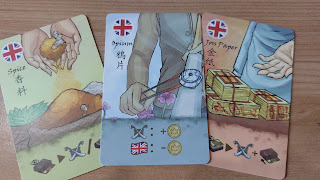
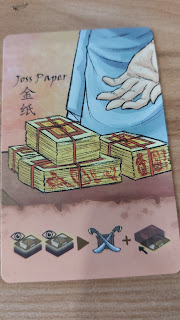











%20-%20Copy.JPG)



















